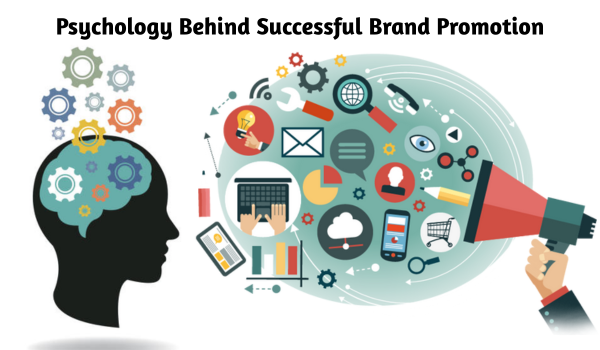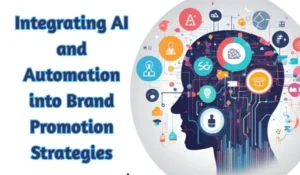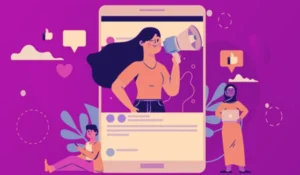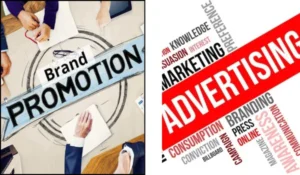In the modern business world, promoting a brand is no longer just about catchy slogans or flashy logos. True brand promotion dives deep into the psychology of human behavior — how people think, feel, and react. Brands that truly stand out in 2025 are the ones that understand what drives consumer decisions at a subconscious level.
From colors to messaging, from social proof to emotional storytelling — every touchpoint is influenced by psychological triggers that can make or break your brand’s impact.
In this article, we’ll explore the psychological principles that fuel successful brand promotion, along with real-world strategies, a comparative table, and why it takes an experienced professional to get it right.
🧠 Why Psychology Matters in Brand Promotion
Branding is not just about products; it’s about perception.
People don’t just buy what you sell — they buy how it makes them feel, how they relate to it, and what they believe it says about them. That’s where psychology steps in.
Understanding human psychology allows marketers to:
- Build trust and emotional connection
- Create lasting impressions
- Influence buying behavior
- Increase brand loyalty
📊 Key Psychological Principles Used in Brand Promotion

| Psychological Principle | How It Influences Branding | Examples in Real Brands |
|---|---|---|
| Color Psychology | Colors evoke emotions and set brand tone | Red for excitement (Coca-Cola), Blue for trust (Dell) |
| Social Proof | People follow what others are doing | Reviews, testimonials, influencers (Amazon, Zomato) |
| Scarcity & Urgency | Drives FOMO and quick decision-making | “Only 2 left!”, “Offer ends in 1 hour” (Booking.com) |
| Consistency | Builds familiarity and trust over time | Same logo, tone, colors across all platforms (Apple) |
| Storytelling | Connects with emotions, values, and aspirations | Emotional ads, founder stories (Nike, TATA) |
| Reciprocity | Give something first to get something in return | Free trials, samples, eBooks (Dropbox, HubSpot) |
| Anchoring | First impressions shape perception of value | Showing a ₹99,999 item before promoting a ₹49,999 offer |
🧩 Deep Dive: Psychological Triggers That Drive Promotion Success
1. Emotional Branding
Humans are emotional beings. Brands that evoke happiness, inspiration, nostalgia, or security often win more loyal followers. That’s why insurance companies sell peace of mind, not policies, and car brands sell freedom, not engines.
🟢 Example: Google’s “Reunion” ad between India and Pakistan was an emotional storytelling masterpiece that went viral — not because of the product, but the emotional story.
2. Brand Colors and Perception
Color is not just a design choice; it’s a psychological trigger. Research shows that up to 90% of first impressions are based on color alone.
- Red: Bold, urgent, energetic (used in sales ads)
- Blue: Calm, trustworthy (used by banks, tech firms)
- Yellow: Cheerful, attention-grabbing (used in food & retail)
- Green: Natural, eco-friendly, peaceful (used in wellness brands)
3. Trust Through Consistency
Brand consistency across all channels builds recognition and trust. Consumers are more likely to buy from a brand they recognize—even if it’s more expensive—simply because it feels more familiar and reliable.
✅ Keep your brand tone, voice, logo, and message uniform across:
- Website
- Social media
- Print media
- Email campaigns
4. The Power of Social Proof
Consumers trust other consumers more than ads. Social proof creates a sense of safety and validation.
📌 Real-world tactics:
- Showcase Google reviews
- Highlight testimonials
- Add client logos or trust badges
- Use influencers who align with your brand
5. FOMO: Scarcity & Urgency
Fear of Missing Out (FOMO) is real. Telling people that an offer is ending soon or that items are limited in stock increases conversion dramatically.
- Examples:
- Flash sales
- Limited edition products
- Countdown timers
🔍 Why You Need an Experienced Brand Promotion Expert
While the psychology behind promotion may seem straightforward, applying it correctly across multiple platforms requires experience and insight. Here’s why working with a seasoned expert matters:
✅ 1. Understanding the Right Triggers for Your Audience
Not all psychological strategies work the same for every business. An experienced expert knows when to apply urgency vs. trust, or when to use humor vs. emotion depending on your niche and audience behavior.
✅ 2. Integrating Psychology with Tools & Platforms
It’s not enough to understand psychology — you need to integrate it with content, design, ads, and data tools. An expert knows how to:
- Apply FOMO in Google Ads
- Use emotional storytelling in email campaigns
- Choose the right color psychology for landing pages
- Craft compelling CTAs based on user behavior
✅ 3. Avoiding Common Mistakes
Inexperienced marketers may overuse psychological tactics (like fake scarcity or clickbait), which can damage brand trust. A professional ensures authenticity while still tapping into psychological strategies that convert.
✅ 4. Saving Time and Resources
Instead of trial-and-error, a branding expert brings tested strategies and frameworks. This saves money on wasted ads, poor designs, or inconsistent messaging.
💬 Real Experience: How I Applied These Principles
In one of my recent branding campaigns for a luxury villa project, I used psychological tactics with great success:
- Emotional video storytelling showing families enjoying peaceful community life
- Color scheme of earthy greens and warm neutrals to evoke nature and trust
- Urgency-based ads like “Only 3 plots left in Phase 1” to create FOMO
- Social proof via video testimonials from happy buyers
- Consistent branding across all channels including print, web, and digital ads
The result? Over 500+ qualified leads in just 60 days and a 14% site visit conversion rate — all driven by psychology-based brand promotion.
🧠 Final Thoughts
Understanding the psychology behind brand promotion isn’t just a trend — it’s the foundation of effective, long-term marketing. The brands that lead in 2025 are those who don’t just promote their product, but connect with their audience on a deeper psychological level.
And while anyone can start a campaign, only an experienced expert knows how to blend human behavior, design, messaging, and tools into a seamless brand experience.



